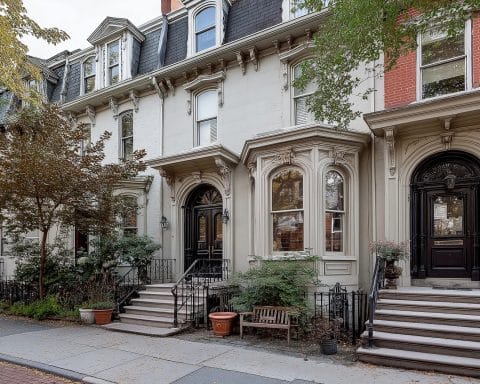The Tampa Bay housing market remains hot entering 2025, with prices still elevated after the pandemic boom. Median home values in the metro hit roughly $408K in early 2025, about 4–5% higher than a year earlier bankrate.com tampabayrealtorsean.com. In fact, Tampa’s home prices have climbed ~35% since 2019, and experts project continued gains, albeit at a slower pace tampabayrealtorsean.com. For example, one forecast calls for 3–5% annual appreciation in prime neighborhoods through 2030 tampabayrealtorsean.com. This reflects Tampa’s enduring population and job growth: the metro is home to ~3.4 million people (up ~7% since 2020) axios.com and added ~53,800 new residents from July 2023 to 2024 (mostly immigrants) axios.com. Meanwhile, Florida’s economy is strong – statewide unemployment was only 3.7% in June 2025 businessfacilities.com – supporting housing demand.
Demand & Supply: After the frenzy, Tampa Bay has shifted toward a more balanced market. Listings are up and homes are staying on market longer. For instance, inventory in Jan 2025 was about 38% higher than a year earlier bankrate.com, and the median days on market rose from 38 (Jan 2024) to 48 (Jan 2025) bankrate.com. That pushed supply to roughly 5.4 months – roughly a balanced market bankrate.com. Sales have slowed: fewer homes sold in early 2025 than a year ago (e.g. 345 vs 379 in Jan) bankrate.com. In short, demand is still solid but buyers now have more choices. New construction is also robust around Tampa, especially in suburbs, adding to inventory. These trends suggest a “corrective plateau”: prices may not drop sharply, but rapid double-digit gains are unlikely without a fresh surge in buyers tampabayrealtorsean.com tampabayrealtorsean.com.
Neighborhood-Level Insights: Growth and pricing vary widely by area. In Tampa proper, former “up-and-coming” areas are now hot: Seminole Heights, Tampa Heights, and Riverside Heights have seen strong price appreciation and remain in high demand tampabayrealtorsean.com. South Tampa (Hyde Park, Davis Islands, Westshore) stays the priciest submarket, buoyed by top schools and proximity to downtown. Outlying East Tampa and Sulphur Springs lag behind, with more modest prices. Nearby St. Petersburg also has pockets of strength: 1-year (2025) median price ~$430K, with neighborhoods like Old Northeast, Kenwood and Crescent Lake driving demand tampabayrealtorsean.com. Emerging zones include South St. Pete and historic Uptown (Deuces), attracting developers and investors tampabayrealtorsean.com. Suburbs such as Wesley Chapel, Brandon, Riverview and Apollo Beach saw most of the recent new-home growth – they offer more land and newer master-planned communities (median prices ~$400K–$420K) tampabayrealtorsean.com.
Rental yields vary too. Downtown Tampa and waterfront districts command the highest rents – about $2,600–$2,700 for a one-bedroom pods.com graystoneig.com. In contrast, older or farther-out neighborhoods (East Tampa, Ballast Point, Palmetto Beach) average nearer $1,900–$2,000 graystoneig.com. Investors looking for rental income often target the mid-tier areas (Seminole Heights, North Hyde Park) where values are lower but rents remain strong. In general Tampa rent is rising faster than incomes: the median rent is about $1,949 as of early 2025 graystoneig.com, up sharply from before. This yields gross rental returns typically in the 5–7% range on well-located properties, higher than many other Florida metros.
- Key Neighborhoods (Tampa metro): South Tampa (luxury/high prices, low rental yields), Seminole Heights and North Hyde Park (growing demand, good yields), Downtown/Water Street (new luxury apartments), East Tampa and Sulphur Springs (revitalizing but still affordable). In St. Pete: Old Northeast/Kenwood (upscale), South St. Pete/Central Ave (transitioning), Pinellas suburbs (clearwater, St. Pete mid-price growth).
Rental Market Trends
The Tampa rental market remains tight and competitive. High in-migration (including international migrants) keeps demand elevated axios.com. Vacancies are low and rent growth is solid, though some recent apartment supply has curbed the surge. Median market rents are ~$1,950/month overall graystoneig.com. According to local market data, Tampa’s apartment vacancy is well below national averages (often under 5%). In mid-2025, roughly 2,661 new multifamily units were completed (H1 2025), but this was down ~80% from the record pace in early 2024 cushmanwakefield.com. This slowdown in deliveries (fewer leases came online) suggests the market may re-balance. Nonetheless, rent increases will likely continue in the near term because in desirable areas demand still outpaces supply.
Investor Perspective: For landlords, Tampa’s rental yields remain among Florida’s best. Investors should focus on growing areas and quality properties. As Graystone Investment notes, targeting up-and-coming neighborhoods and higher-yield segments is key graystoneig.com. For example, converting city bungalows in Seminole Heights or adding units in walkable zones near Water Street can boost returns. Short-term rental (vacation rental) demand around Tampa’s beaches (Clearwater, St. Pete) also offers opportunities, though stricter regulations are a risk.
Commercial Real Estate Trends
Tampa’s commercial sector has divergent trends by property type:
- Office: Tampa Bay office vacancy is rising but remains moderate. Early 2025 data show ~15.8% vacancy cliggitt.com (Cushman’s Q2 report pegs it at ~20.2% including suburban Tampa). The rise reflects the lingering effects of remote work. However, asking rents for newer Class-A space have increased (Cliggitt reports rents ~$30.23/sqft, +3.8% YoY cliggitt.com), indicating that premium offices in prime locations still attract tenants. Coworking space is expanding (Tampa ranks 5th nationally for remote-work jobs 995qyk.com), and investors are still buying well-located offices (sales in early 2025 averaged ~$236/sqft cliggitt.com). In short, older buildings are under pressure, but high-quality offices near the core or I-4 corridor hold value.
- Retail: Retail demand in Tampa is extremely strong. Vacancy has stayed under ~3.5% since 2022 marcusmillichap.com cushmanwakefield.com. National and international retailers are drawn by Tampa’s population boom, especially at the metro edges. In rapidly growing suburban areas (North Hillsborough, Pasco), rents grew double-digits last year marcusmillichap.com. Even neighborhood strip centers are full: Colliers reports Tampa retail vacancy only ~3.5% (Q2 2025), well below U.S. average cushmanwakefield.com. Landlords enjoy pricing power; new projects (e.g. mega-malls in Wesley Chapel) are being proposed. Retail financing remains attractive, with cap rates ~4–6% for prime centers.
- Industrial/Logistics: Tampa Bay’s industrial market is still healthy but cooling from its peak. Vacancy stood around 6–7% in 2025 cushmanwakefield.com – up modestly from the near-all-time lows of 2021–22. Direct asking rents are about $10.40–$10.50 per sq.ft. (Cushman Q1 2025 data) assets.cushmanwakefield.com. Rent growth has slowed to mid-single digits YoY. Rental rates remain highest for modern warehousing near major interstates (I-4/I-75). Key submarkets like Plant City and the I-4 corridor still see strong absorption of new space, but a lot of speculative space is coming online through 2025. Overall, the industrial sector continues to be a workhorse (logistics and distribution), but investors are more cautious than in the pandemic surge.
Economic & Demographic Drivers
Tampa’s real estate is underpinned by solid population and economic trends. The region grew about 2% annually in recent years. Tampa Bay’s metro population was ~5.24 million in 2023, with net in-migration (especially international) continuing to drive growth usf.edu axios.com. Tampa city itself (Hillsborough County seat) has ~414,000 residents (2025 est.) worldpopulationreview.com, up ~6.6% since 2020. The median age is a young ~35.6 years worldpopulationreview.com, and median household income is ~$71,300 worldpopulationreview.com, reflecting many working families moving in.
Job growth is strong. Florida (with Tampa as a core) has outperformed the nation – Florida’s unemployment was ~3.7% in mid-2025 businessfacilities.com. Tampa-area employers have added substantial jobs: in mid-2025 the metro saw one of the highest increases in private-sector jobs nationwide. Key sectors include technology, healthcare/life sciences, finance, and logistics. Tampa Bay is developing as a life-sciences hub (research parks at USF), and major companies (Emerson, Tech Data, JP Morgan Chase, etc.) have significant presence. Business-friendly policies and no state income tax continue to attract corporations and retirees alike. In summary, job creation and rising incomes are keeping homebuying demand robust.
Major Infrastructure & Development Projects
Several big projects are reshaping Tampa and boosting real estate demand:
- Tampa International Airport (TPA) Expansion: A new Airside D terminal (600,000 sq.ft., 16 gates) is in design, slated to open in late 2028. This $1.5 billion addition will expand capacity for international flights wusf.org wusf.org. An expanded airport often spurs hotel, industrial, and office development nearby, raising land values.
- Water Street Tampa: A 56-acre private redevelopment in downtown Tampa. Phase 1 (completed 2023) built three apartment towers, three hotels, offices and shops. Phase 2 is now underway, adding six new city blocks of mixed-use space and a one-acre central park abcactionnews.com abcactionnews.com. This project transforms former parking lots (near the Sports Arena) into a vibrant urban neighborhood, and is expected to span ~10 years until full buildout abcactionnews.com.
- Brightline High-Speed Rail: The privately-funded Brightline train (now Miami–Orlando) is planning an extension to Tampa. In mid-2025 Brightline sought $400 million in tax-free bonds to finance the Orlando–Tampa segment baynews9.com baynews9.com. If approved, service could start in the late 2020s. Improved rail connectivity would make Tampa more accessible to visitors and commuters (and could bump housing demand along the line).
- City Resilience (PIPES Program): The City of Tampa completed a $2.9 billion infrastructure overhaul in mid-2025 (via the PIPES state program) to upgrade water, sewer and storm systems in East Tampa neighborhoods (East Tampa, Virginia Park, MacFarlane Park, Forest Hills) tampa.gov. Better utilities and flood control increase neighborhood attractiveness and home values.
- Streetcar / Transit Plans: Tampa is planning to expand its TECO streetcar: a 1.3-mile extension through downtown to Tampa Heights is preferred tampa.gov. HART and the city are also studying bus rapid transit lines. While these are longer-term, improved transit can boost commercial and residential development along the corridors.
- Other Projects: County-wide projects include the planned renovation or replacement of the Tampa Convention Center, and road/park improvements. The Tampa Bay Rays have proposed a new ballpark that could relocate the team by 2028, which would transform surrounding neighborhoods (though details are still uncertain).
These projects are fueling growth hotspots. For example, areas around Water Street and the arena have seen new apartment and retail development. The Tampa Naval Air Station’s redevelopment (WaterWorks district) and the Midtown innovation district are additional catalysts. Altogether, ongoing infrastructure investments support both homebuyer interest and commercial expansion.
Investor Insights & Opportunities
Investors see Tampa as a top Florida market. Some key takeaways:
- Residential RE Investment: Homeflippers and rental investors have been active, though competition is cooling. Houses priced under $500K in good neighborhoods still see multiple offers tampabayrealtorsean.com. Investors are eyeing “teardown” lots (buy older homes on big lots and build new duplexes/condos) in places like Seminole Heights or North Hyde Park tampabayrealtorsean.com. Multifamily (2–4 units) is also attractive: demand for affordable rentals is rising, making duplex/triplex buildings appealing. Urban condos near the core have seen some price softness (amid supply of new apartments), but well-located new condos or luxury rentals downtown still command premium rents.
- Commercial RE Investment: Cap rates in Tampa have expanded slightly from record lows, but remain low by historic standards. Office and retail properties are trading at mid/high single-digit caps. Industrial/logistics assets (especially last-mile warehouses) still fetch low-8% caps due to strong demand. Institutional investors are buying in: for example, in early 2025 Tampa office sales reached $145M at ~$236/sqft cliggitt.com. Investors favor Class A office and retail in growth corridors. Mixed-use redevelopment projects (e.g. converting malls to apartments, office-to-residential conversions) are also on the radar given changing retail/office usage.
- Risk-Adjusted Yields: Tampa tends to offer higher rental yields than pricier Florida metros (like Miami). Investors typically see gross yields around 4–7% on quality properties. Outlying areas (Pasco/Pasco/Pasco) may offer higher cap rates. The potential for moderate home price gains plus rental demand (given no state income tax and growing population) makes Tampa attractive for buy-and-hold investors.
- Emerging Sectors: Alternatives like student housing (near USF), senior living (aging population segment), and industrial condos (small warehouses) are niche opportunities. Also, short-term vacation rentals in the Pinellas beach corridor (St. Pete/Clearwater) still draw investors, though local regulations can limit expansions.
Economic & Demographic Context
Tampa’s real estate does not exist in isolation. Key factors:
- Population Growth: Tampa Bay metro’s 7% growth (2020–2024) outpaces the U.S. average axios.com. Fueled by both domestic movers (retirees/tech workers) and international immigrants axios.com, the expanding population puts sustained pressure on housing demand.
- Income & Jobs: While household incomes in the city (~$71K median worldpopulationreview.com) are lower than national medians, the region’s job growth in higher-paying sectors is lifting wealth. Florida has seen ~3 million new businesses since 2019 businessfacilities.com, and Tampa area’s tech, financial, and medical industries are growing. The fact that Florida has no income tax and a large retiree influx also fuels discretionary income and second-home demand.
- Market Sentiment: Local realtor associations and analysts note a shift from a sellers’ to a neutral market. Some forecasters even call 2025 a “buyer’s market” momentarily, due to rising inventory tampabayrealtorsean.com. Mortgage rates are a wildcard: at ~6–7%, many buyers are “locked in” to lower pre-2024 rates, reducing turnover. Still, if rates stabilize or fall (as some predict by 2026), Tampa could see renewed bidding wars for the best homes tampabayrealtorsean.com.
Government and Infrastructure Projects Impacting the Market
Several government-led projects are key:
- Neighborhood Revitalization (PIPES): The City’s completion of a $2.9B water/storm infrastructure project in mid-2025 (East Tampa, etc.) improves living conditions and can raise nearby home values tampa.gov.
- Transportation: Plans for the Tampa Streetcar extension and potential bus rapid transit lines mean better connectivity; properties near future stops may command premiums. The planned airport expansion (Airside D) will bring more airline service and visitors, likely spurring hotels and logistics development.
- Zoning & Development Policy: Tampa city government has relaxed some downtown zoning to allow taller mixed-use towers, encouraging projects like Water Street. The county is also reviewing inclusionary housing rules and infrastructure plans (roads, parks) that will affect development patterns. Investors should watch local elections and policies (e.g. property tax appeals, short-term rental regulations), as these can influence market dynamics.
Market Risks & Uncertainties
Tampa faces a few notable headwinds:
- Interest Rates & Affordability: The recent rise in mortgage rates (over 6%) has pushed monthly payments higher. This squeezes buyers and could moderate price growth. Bankrate notes that the average Tampa mortgage payment (at 6.5%) is ~$2,974, some $437 more than a year prior bankrate.com. If rates remain high, first-time buyers may be priced out of entry-level homes, softening demand.
- Climate & Insurance: Tampa’s low elevation and storm risk are material concerns. Statewide, insurers are hiking premiums or exiting markets due to hurricanes and flooding. Experts warn that Florida is “worst in what climate change is doing to property insurance rates,” and that runaway insurance costs could eventually depress property values insurancenewsnet.com. In Tampa, new flood-risk disclosures and rising premiums may deter some buyers in vulnerable areas (e.g. near the bay or in old floodplain neighborhoods). Properties needing repeated weather damage repairs can become liabilities.
- Economic Slowdown: A national recession or major economic shock would hit Tampa. Although Florida has grown strongly, it is not immune. Overbuilding is also a risk: if too many condos or apartments come online relative to demand (as occurred in Phoenix or Vegas before), prices could plateau or fall temporarily.
- Changing Work Patterns: Continued adoption of remote work may keep some office vacancy high long-term. If companies consolidate space, downtown office rents could underperform. Also, any unexpected changes in migration (e.g. tax law or migration restrictions) could slow population growth.
Overall, Tampa’s fundamentals are strong, but moderation is likely. The consensus forecast (mid-2025 onward) is for flat-to-modest price increases through 2026 if current trends hold tampabayrealtorsean.com tampabayrealtorsean.com. By contrast, a dramatic surge or crash seems unlikely barring a major shock. In the balance: rising local jobs/population vs. headwinds of affordability and climate.
Long-Term Projections (to 2030)
Looking beyond 2025, most analysts expect Tampa Bay to remain one of the Sun Belt’s best housing markets:
- Population & Demand: The region will continue growing. Most projections call for steady 1–2% annual growth (adding ~300K+ people by 2030). By 2030, Tampa Bay could approach ~3.7–3.8 million residents. Migrants from expensive coastal states and abroad are likely to keep coming, given Florida’s strong magnet.
- Price Appreciation: With no state income tax, strong amenities, and economic incentives, Tampa should see moderate home price gains (est. 3–5% per year) in desirable submarkets tampabayrealtorsean.com. Areas with new infrastructure or land to develop (e.g. Wesley Chapel, Plant City, East Pasco) may outpace the core. However, older inventory in flood zones or needing rehab could lag or even depreciate if insurance costs bite tampabayrealtorsean.com.
- Investor Strategy: Long-term investors will likely do best by focusing on jobs-driven growth areas and diversified property types. For example, as the downtown core densifies, infill condos or apartments there could see capital gains. In the suburbs, single-family rentals and big-box retail are bets on continued in-migration.
In conclusion, Tampa’s real estate market in 2025 and beyond is poised between opportunity and caution. Prices have climbed significantly, but the region’s robust growth drivers – new residents, jobs, and megaprojects – still offer upside. Savvy buyers and investors are watching neighborhood-level trends (targeting Tampa Heights over East Tampa, or North Tampa over Sulphur Springs) and government plans (airport and urban development) to identify where the market will heat up next. As one forecast put it, Tampa remains “one of the most attractive housing markets in the U.S.” for the long run tampabayrealtorsean.com.
Sources: Latest Tampa Bay realtor and market reports, government statistics, and commercial real estate analyses bankrate.com graystoneig.com axios.com tampabayrealtorsean.com tampa.gov baynews9.com wusf.org insurancenewsnet.com marcusmillichap.com assets.cushmanwakefield.com.












